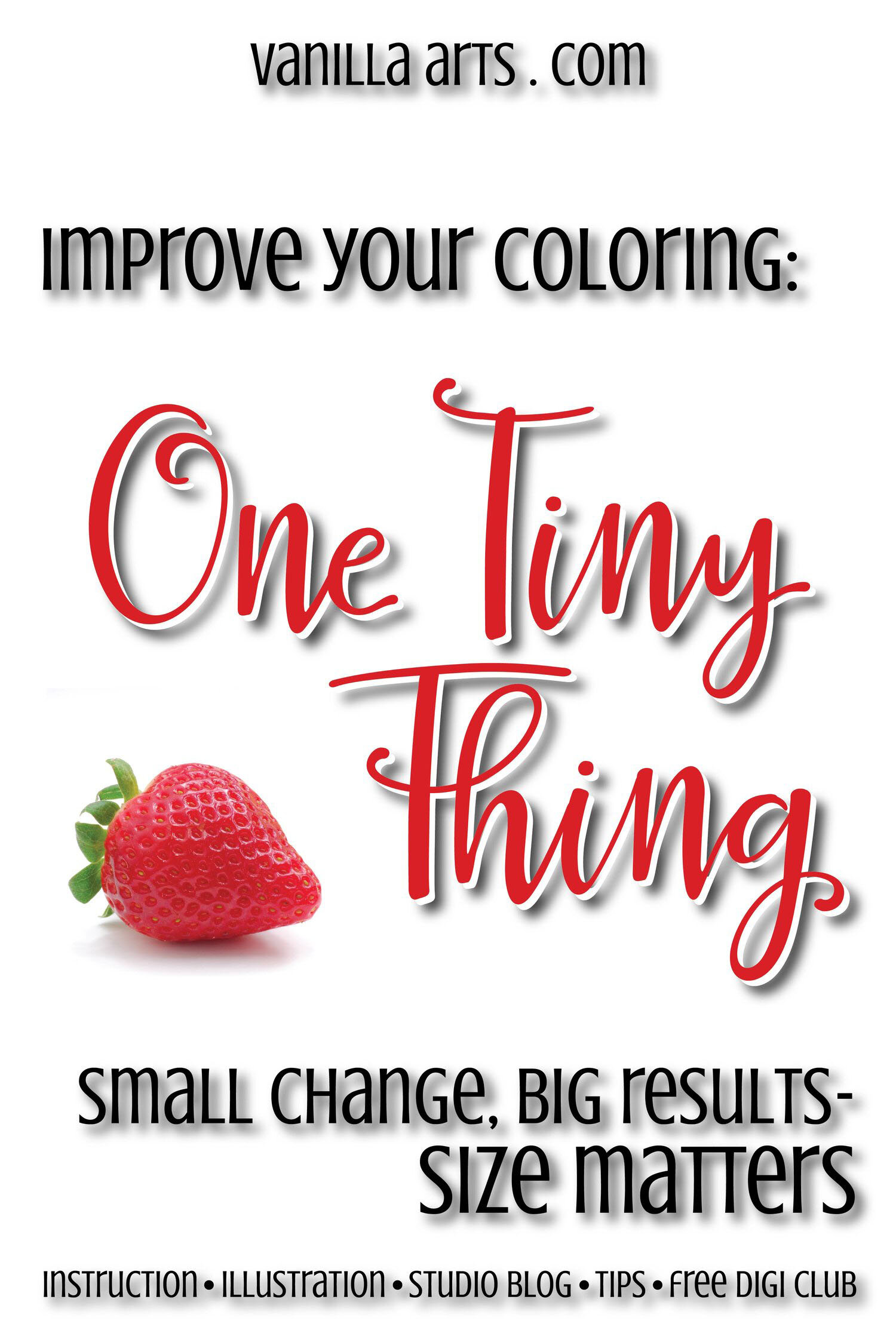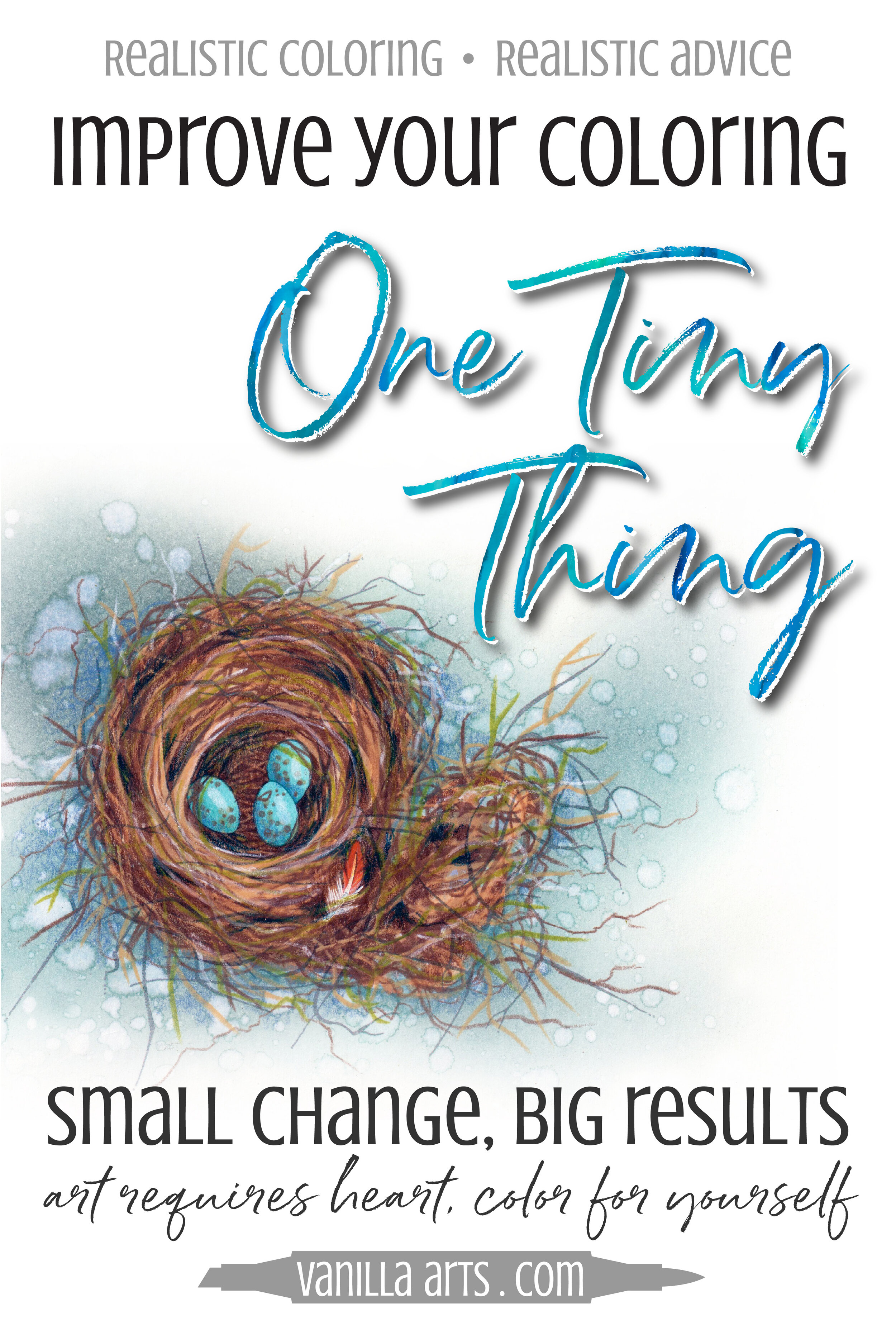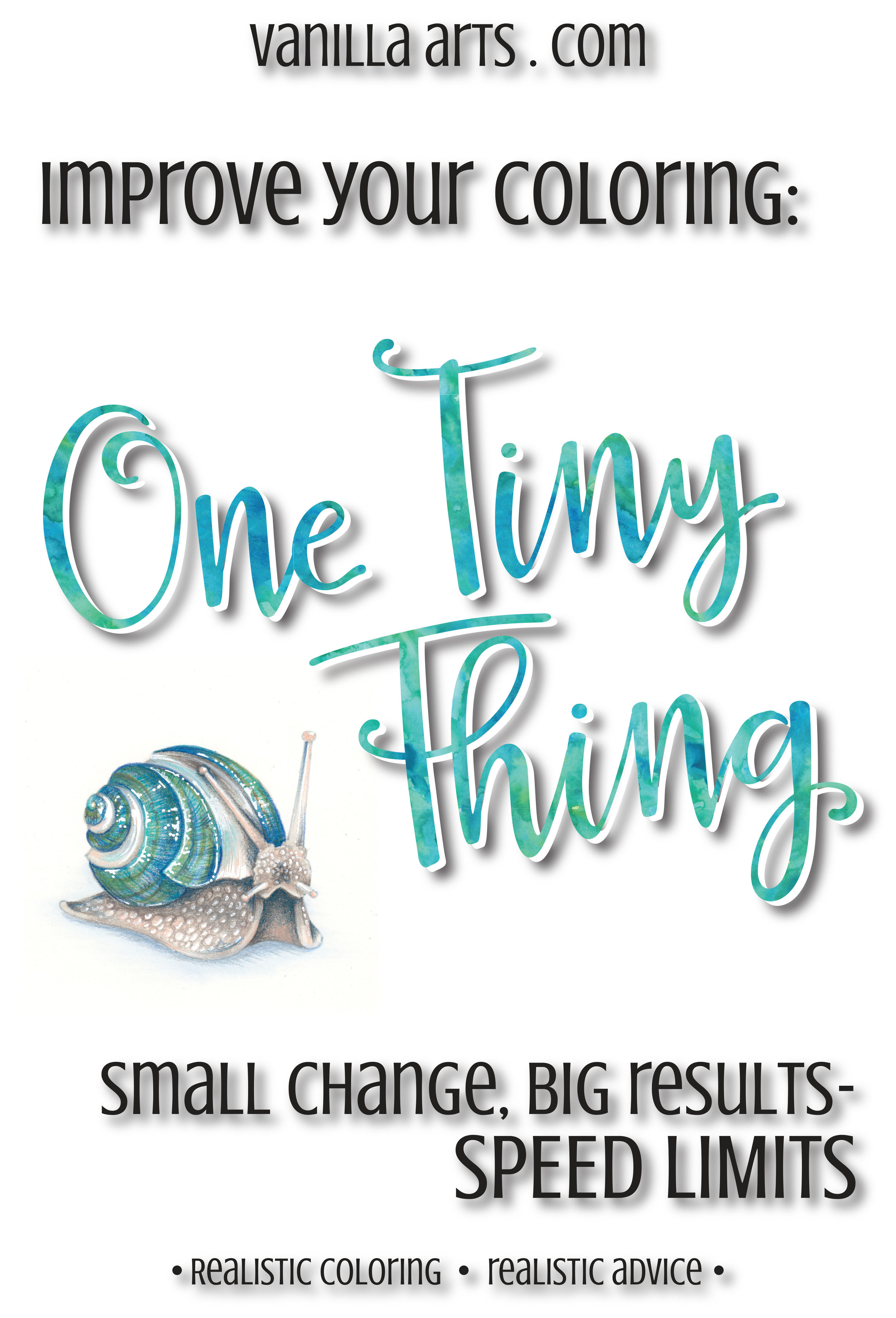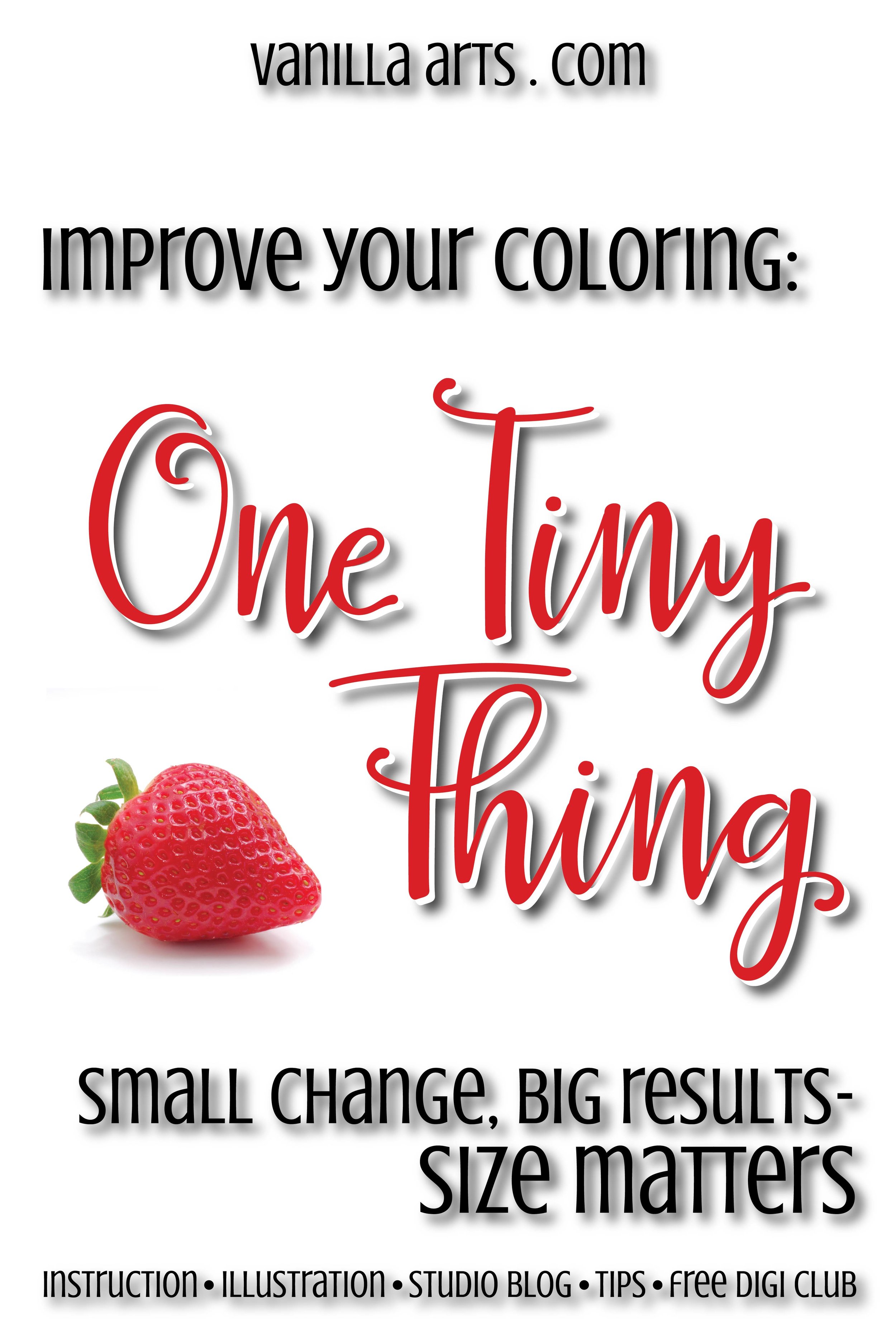
Vanilla Arts Rewind: Improve your Copic Marker Coloring Today - Size Matters
January is a Time to Reflect…..
So we decided to bring back some tried and true tips and tricks from the Vanilla Arts archives!
This week we look at why size matters…..are we too hard on ourselves because we are trying to color too small?
There are no magic shortcuts to better coloring...
But there are small…

Improve Your Copic Coloring: Color for Yourself
There are tiny things which you can do today to improve the quality of your coloring projects. They’re not fairy tale enchantments but they really do help.
Today's Tiny Thing: stop coloring for everyone else.


